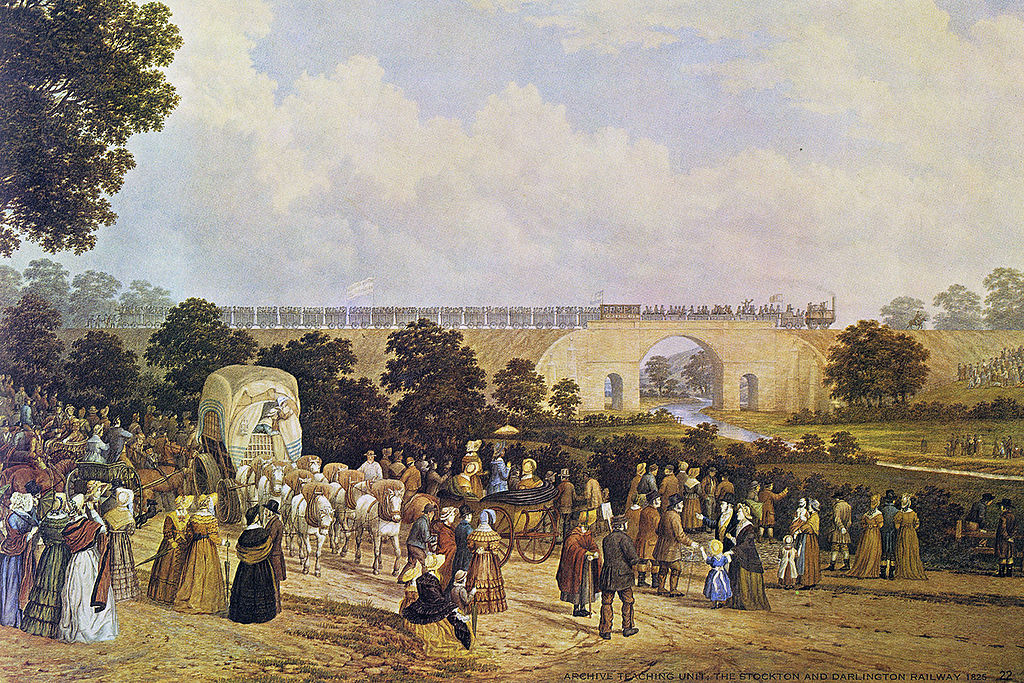
image for illustration: Stockton & Darlington Railway Opening by John Dobbin, Public domain, via Wikimedia Commons
Historic England (HE) explores how the Stockton and Darlington Railway became the world’s first modern public railway in 1825.
Historic England writes:
When the railway expanded in Britain in the 19th century, it transformed the way people lived, worked and socialised. Heavy goods could be transported faster than before, rural areas now had access to urban centres and new employment opportunities, and travel and leisure activities became more accessible for most people. But how and when did people first start using the railways?
The Stockton and Darlington Railway (S&DR) became the world’s first standard-gauge, steam-hauled public railway when it opened in 1825. 27 September 2025 marks its bicentenary, and Railway 200 is a year-long, nationwide campaign to celebrate 200 years of the modern railway. Explore what made the S&DR special and discover how you can experience it in the historic environment today.
Early railways in England and Wales
Railways had been used in the mining industry since at least the 16th century to move materials from mines and quarries for onward transport to market. On fairly level terrain, these were simple wooden rails with wagons pulled by horses, but rope-hauled incline planes could be used on steep gradients. Timber-railed, horse-drawn wagonways were extensive by the 18th century, with iron gradually replacing timber by 1800, which also saw the first railways being built for public use. The first use of a steam locomotive was in South Wales in 1804, and the first (horse-drawn) passenger service also started in South Wales in 1807.
When did the Stockton and Darlington Railway open?
On 27 September 1825, the S&DR built on early railway technology and changed the world of travel. It brought together many strands of existing railway technology to create a remarkably pioneering endeavour. At the railway’s hilly western end, coal wagons were rope-hauled up inclines by stationary engines and pulled by horses along the level. At New Shildon, a train of wagons was formed, including the passenger coach known as the Experiment. This train, carrying 600 passengers and tonnes of goods, was then hauled by Stephenson’s engine Locomotion to Stockton.
Why was the Stockton and Darlington Railway built?
The railway connected the Durham coal field to the west of Bishop Auckland with the market town of Darlington and the port of Stockton-on-Tees, where goods could be loaded onto boats. This reduced the cost of transporting coal, but it also allowed the carriage of other freight and passengers.
Read more….
